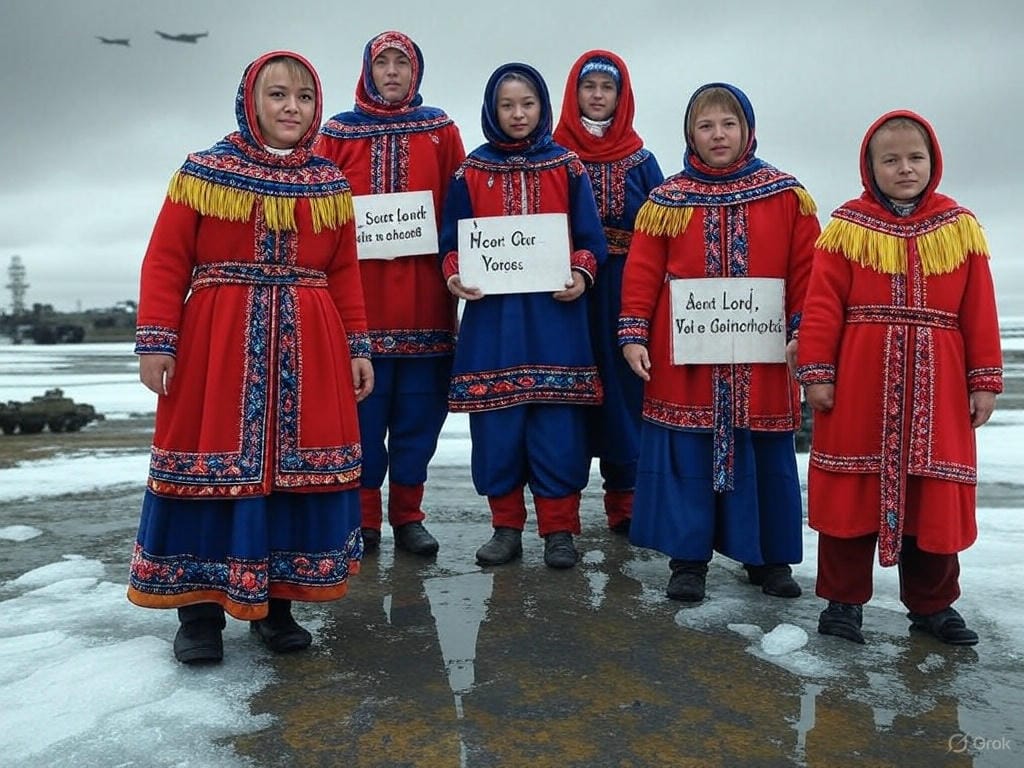As geopolitical tensions mount in the Arctic, a different kind of battle is unfolding far from the headlines and defense summits—one fought not with weapons, but with words, land, and centuries-old traditions. The Sámi people of northern Norway, an Indigenous group whose ancestral lands stretch across Norway, Sweden, Finland, and Russia, are facing an increasingly invisible but deeply personal threat: the militarization of their homelands.
🧭 A New Cold Front, Same Old Story
The Arctic is becoming a stage for new power plays. With melting ice opening up shipping lanes and access to previously untapped resources, NATO countries, Russia, and even China are setting their sights on this once-remote frontier. Military exercises are growing in frequency and scale, airbases are expanding, and defense infrastructure is being fast-tracked in the name of national security.
But what’s often missing from these discussions is a voice that’s been rooted in the Arctic for millennia—the Sámi.
For the Sámi, the tundras, forests, and rivers aren’t just scenery. They are sacred. These landscapes are the foundation of their identity, livelihoods, and spirituality. Reindeer herding routes, ancient migration paths, and cultural sites are increasingly being overshadowed—sometimes literally—by fighter jets and radar installations.
“We’ve lived in balance with this land for generations. Now, decisions are being made that change it forever—without asking us,” says Elle Márjá, a young Sámi activist from Finnmark.
🛑 When Reindeer Meet Roadblocks
One of the most tangible impacts of militarization on Sámi life is the disruption of traditional reindeer herding. Fences, no-fly zones, military drills, and construction sites carve up ancient migration routes, forcing herders to adapt or abandon practices passed down through generations.
Reindeer, sensitive to noise and environmental changes, often flee their usual paths when faced with the sounds of helicopters or explosions. Calving grounds are disturbed. Grazing areas are contaminated. Herders find themselves navigating not only natural challenges, but bureaucratic mazes and defense priorities.
And it’s not just about economics—it’s about culture, connection, and survival.
“Every piece of this land tells our story. When it’s disturbed, we lose more than just terrain—we lose memory, belonging, and dignity,” says Nils Isak, an elder from the Sámi Parliament in Norway.
💭 Are Indigenous Rights Being Sacrificed for Strategy?
In this new era of Arctic militarization, a difficult question looms: Are Indigenous rights being quietly sidelined in the name of national defense?
Under international law, Indigenous communities have the right to consultation and free, prior, and informed consent regarding projects that impact their lands. Yet many Sámi activists argue that these standards are being ignored or diluted. Military expansions are often justified as “urgent,” leaving little room for dialogue or dissent.
Governments have promised to balance defense needs with Indigenous interests, but for many Sámi, these promises ring hollow. Consultations are seen as box-checking exercises. Compensation comes too late, or not at all. And cultural losses are often invisible to those drawing the maps.
🗣️ Reclaiming the Narrative
Despite the challenges, Sámi voices are growing louder—across courtrooms, parliaments, and international forums. They are demanding not just visibility, but agency. Some are calling for Arctic demilitarization zones; others are pushing for Indigenous co-governance in land-use planning.
Their message is clear: national security should never come at the cost of cultural extinction.
In 2023, a group of Sámi youth staged a peaceful protest outside Norway’s Ministry of Oil and Energy, following a Supreme Court ruling that declared a wind farm project on Sámi land illegal. The turbines are still standing today. The same patterns are repeating with military infrastructure—judicial wins followed by bureaucratic inertia.
🌍 Why Their Perspective Matters
In a time when the world is rethinking its relationship with nature and grappling with the costs of colonial legacies, the wisdom of Indigenous communities is not a footnote—it’s a guiding light.
The Sámi have practiced sustainable stewardship of the Arctic long before it became a geopolitical hotspot. Their knowledge systems, relationship with the land, and community-based decision-making offer a valuable counterpoint to top-down, militarized approaches.
If Arctic policies continue to be shaped solely through the lens of strategy and competition, we risk losing not only ecological balance—but the human richness that has defined the North for thousands of years.
✊ The Way Forward
What would Arctic security look like if Sámi voices were truly centered? Perhaps it would mean fewer weapons and more wisdom; less extraction, more protection. It would mean honoring the right to exist, thrive, and speak in one’s own land.
As militarization advances across the Arctic frontier, we must ask ourselves: Whose future are we securing—and at what cost?
